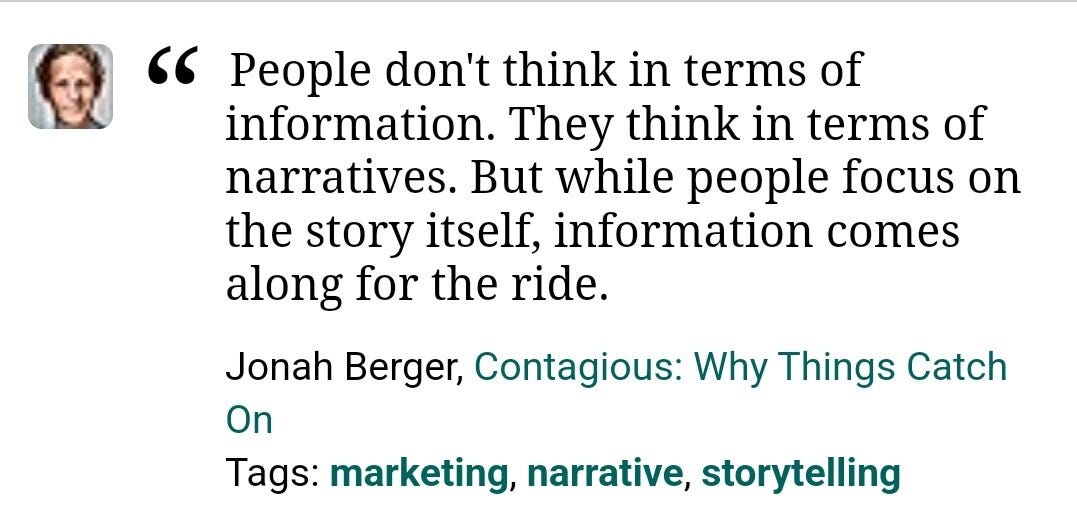Entertaining people is giving value.
Sharing information is giving value.
Combine the two, and you're storytelling.
Storytelling is how traditions are passed. Not by breaking down the tradition in a series of steps, but by showing the significance of the tradition through a story.
Storytelling is how the horrors of the past have reached us in the present. Urban legends and other scary things were passed from parents to kids verbally before the internet. The campfire narrative still goes well with horror, and the crackling flames distort everything to include your imagination in the story in a way that the best CGI still can’t match.
When the older dudes gets together to reminisce about the good old days you learn about people who are gone. People the world has never heard of, but who mattered a lot to the old dudes reminiscing about them over drinks. Their memories are stories of a private history.
Story is a balance of information and entertainment that draws the viewer in and keeps him waiting for what’s next.
Too much entertainment and the viewer gets bored. (This is why the biggest and flashiest CGI makes people numb after a while.)
Too much information and the viewer gets bored.
The info dump: the point in the narrative at which a character has to break down plot points and explain things to another character, and the audience. It can be a glut of dialogue.
Information that is needed for the story to proceed.
Or the Message of the story.
The moral of the story.
The common way of dealing with this is to just film it straight ahead, with the actors just talking. Or to write it in a novel or short story as characters exchanging dialogue.
This is something that works better in print than in a visual medium.
Even then, don’t rely on the medium to simply write talking heads. Explore creative ways to make the info dump dynamic by incorporating action into the act of having characters delivering information to each other. This is where you can look inside the world of the story to find story elements that can energize the narrative by looking for ways to show things rather than tell them. If you’re telling a story in a sci-fi setting maybe a found robot you reactivated can deliver the information. Or maybe an old artifact from the past, like a tape recorder/playback machine with a bunch of tapes is found. None of the people present knows what to make of it, but your protagonist is someone who takes an interest in vintage tech, and after some experimenting she figures out how to use the tape player, and a secret is revealed that sends her on an adventure.
I can go on like that, but the permutations of story and information are infinite. You have to look at your story elements and make creative decisions. Decisions that often are spontaneous, and depend more on intuition than on plot mechanics.
Keep an open mind as your story unwinds itself before you, with the intent of keeping the reader (or viewer) in anticipation for what’s next.



I love story telling. It’s like you said it’s entertainment and information put together. CGI - they did a survey on that and the people picked the CGI images over the real images stating that those were more real. It’s gotten a little out of hand.